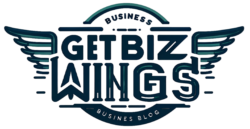In a rapidly evolving job market, hiring the right talent has become more critical than ever. As businesses gear up for 2025, traditional recruitment methods are giving way to innovative strategies designed to attract top performers while staying ahead of industry trends. Companies that adapt quickly will secure a competitive edge in this talent-driven era.
High-performance hiring isn’t just about filling positions; it’s about building a workforce that drives growth and innovation. From leveraging advanced technologies to prioritizing candidate experience, organizations are redefining how they identify and engage with exceptional talent. The future of hiring demands a strategic approach that aligns with both business goals and the changing expectations of the workforce.
Leveraging AI for Smarter Candidate Screening
AI enhances candidate screening by automating repetitive tasks and improving decision accuracy. Recruitment teams adopt AI-driven systems to evaluate resumes, shortlist candidates, and rank profiles based on preset criteria. Advanced algorithms identify skill matches and eliminate biases by focusing on qualifications and experience over personal attributes.
Machine learning tools predict candidate success by analyzing historical hiring data. These tools assess factors like tenure, performance, and cultural fit, helping recruiters make data-driven decisions. Predictive analytics transforms vast candidate pools into focused talent pipelines.
Natural language processing (NLP) simplifies handling unstructured data, such as cover letters and assessments. AI-powered platforms extract insights, flag inconsistencies, or highlight standout skills, streamlining the initial evaluation phase.
Chatbots improve candidate engagement during early touchpoints. They answer questions, schedule interviews, and provide updates, reducing recruiter workloads while enhancing the candidate experience. For organizations adopting a high-performance hiring approach, these AI tools align with operational goals to attract top talent efficiently.
Building a Strong Employer Brand to Attract Top Talent
Developing a compelling employer brand ensures organizations stand out in competitive talent markets. A strong brand communicates company values, workplace culture, and growth opportunities, attracting candidates whose professional goals align with the organization.
- Communicating Core Values
Communicate values clearly through recruitment materials, careers pages, and social media. For example, emphasize flexibility for remote work or sustainable practices to appeal to specific talent pools. Align messaging with industry trends to remain relatable. - Leveraging Employee Advocacy
Encourage employees to share positive workplace experiences on platforms like LinkedIn or Glassdoor. Highlight testimonials, team success stories, and “”day-in-the-life”” content to amplify authenticity. Authentic employee voices often attract highly-skilled professionals. - Enhancing Online Presence
Maintain a professional and engaging online presence through an optimized careers page with resources such as a “ Visit Website” call-to-action. Include media like a high-performance hiring video to showcase company strengths. Clear navigation and up-to-date job listings enhance candidate engagement. - Fostering Inclusive Culture
Promote an inclusive workplace by sharing diversity initiatives and success metrics. Showcase representation in leadership teams and employee development programs. Inclusion fosters a reputation that draws diverse candidates. - Offering Transparent Growth Opportunities
Publicize career development initiatives, including training programs or leadership pathways, on job descriptions and industry forums. Transparency reassures candidates about long-term value in joining the organization.
Analytics tools track engagement with employer branding campaigns, providing insights for continuous improvement. Strong branding creates lasting impressions, efficiently converting interest into applications.
Strategies for Identifying High-Potential Candidates
Utilizing Data-Driven Assessments
Organizations rely on data-driven assessments to evaluate candidates’ skills, cognitive abilities, and emotional intelligence. These tools help compare applicants objectively against defined benchmarks. For example, gamified assessments uncover decision-making abilities, while psychometric tests assess cultural alignment. Data accuracy ensures better predictability of success in the role.
Focusing on Behavioral Interviews
Behavioral interviews provide insights into past experiences and competencies. Structured questions about specific situations, such as problem-solving or leadership challenges, reveal patterns in behavior. This method identifies high-potential candidates who demonstrate adaptability and consistent performance under pressure.
Leveraging Talent Analytics
Talent analytics platforms analyze market trends and highlight candidate pools with sought-after skills. When recruitment teams integrate analytics into hiring strategies, they gain actionable insights into workforce demands and candidate potential. These tools, combined with predictive modeling, help forecast candidate success and retention.
Evaluating Learning Agility
Learning agility indicates a candidate’s ability to quickly acquire and apply new skills. Assessments focusing on adaptability, curiosity, and feedback responsiveness are ideal for identifying future-ready employees. Candidates demonstrating high learning agility are more likely to excel in dynamic roles requiring continuous upskilling.
Emphasizing Collaborative Simulations
Collaborative simulations assess interpersonal skills, teamwork abilities, and conflict resolution. These exercises replicate workplace scenarios to gauge real-time responses. These methodologies highlight candidates capable of thriving in team-based, performance-driven environments.
Incorporating AI-Powered Tools
AI-powered platforms streamline candidate evaluations by identifying patterns in qualifications and achievements. Tools like resume parsers and AI assessments analyze large applicant pools to rank profiles accurately. Chatbots enhance the process by ensuring timely responses, creating seamless recruitment experiences.
Exploring Passive Talent Landscapes
Recruitment professionals explore passive talent pools for high-potential candidates. Platforms like LinkedIn and networking events help businesses connect with individuals open to opportunities but not actively job-seeking. Maintaining engagement through personalized outreach enhances the likelihood of onboarding top-tier talent.
How Data Analytics Is Shaping Recruitment Decisions
Data analytics plays a crucial role in modern recruitment, transforming how companies identify, evaluate, and hire talent. By analyzing large volumes of recruitment data, businesses gain actionable insights into candidate behaviors, hiring trends, and workforce dynamics. For instance, talent analytics tools assess application-to-hire ratios, skill gaps, and time-to-hire metrics, enabling organizations to optimize hiring practices.
Predictive analytics enhances decision-making by forecasting candidate success and attrition risks. Analyzing historical performance data helps recruitment teams identify factors linked to long-term employee retention. This method increases accuracy in selecting candidates who align with organizational goals. For example, assessments may account for prior job stability and performance in similar roles to predict cultural fit.
Real-time dashboards provide visibility into recruitment campaign effectiveness. Metrics, such as applicant drop-off rates during specific stages, guide recruiters in refining hiring processes. These insights also ensure that resources focus on high-yield strategies. Recruitment analytics platforms integrate feedback from multiple sources, like ATS (Applicant Tracking System) data and candidate surveys, ensuring continuous improvement.
Through demographic analytics, organizations address diversity and inclusion objectives. Identifying trends, such as underrepresentation in certain job categories, guides equitable recruiting efforts. Targeted diversity programs become data-driven, making it easier to meet both strategic and ethical hiring goals.
Recruitment analytics ensures alignment with high-performance hiring objectives. Organizations can pair data insights with resources, like a High-Performance Hiring Video, to refine strategies and attract top talent. By leveraging data effectively, companies position themselves to compete in the evolving job market of 2025.
The Importance of Continuous Learning in Retaining Top Talent
Continuous learning enhances employee engagement and helps retain top talent by fostering professional development. Organizations that prioritize learning opportunities create a culture where employees feel valued and motivated to upskill. High-performing individuals are more likely to remain with companies that invest in their long-term growth.
Offering role-specific training, leadership development programs, and access to modern learning platforms supports ongoing skill enhancement. Examples include online courses, certifications, or internal workshops designed to adapt employees’ capabilities to emerging business needs. Companies that align learning initiatives with career progression pathways maintain a future-ready workforce.
Integration of advanced technologies, such as AI-driven learning management systems (LMS), customizes content delivery and tracks progress. These tools analyze individual performance, recommend tailored programs, and address skill gaps effectively. By deploying such scalable solutions, businesses ensure continuous improvement across employee levels.
Collaboration with team leaders encourages employees to set learning objectives tied to organizational goals. Transparent communication about growth opportunities and regular feedback on skill development initiatives boosts employee trust. Companies creating a strong learning ecosystem reduce turnover rates and increase job satisfaction among high-achieving professionals.
Innovative Hiring Practices for Competitive Advantage
Adopting high-performance hiring strategies is essential for staying ahead in the dynamic job market of 2025. By integrating advanced technologies, fostering a strong employer brand, and leveraging data-driven insights, organizations can attract and retain top talent while aligning recruitment efforts with business goals.
Prioritizing continuous learning and employee development further ensures a motivated and future-ready workforce. Companies that embrace these innovative practices will not only meet evolving workforce expectations but also position themselves as leaders in their industries.

